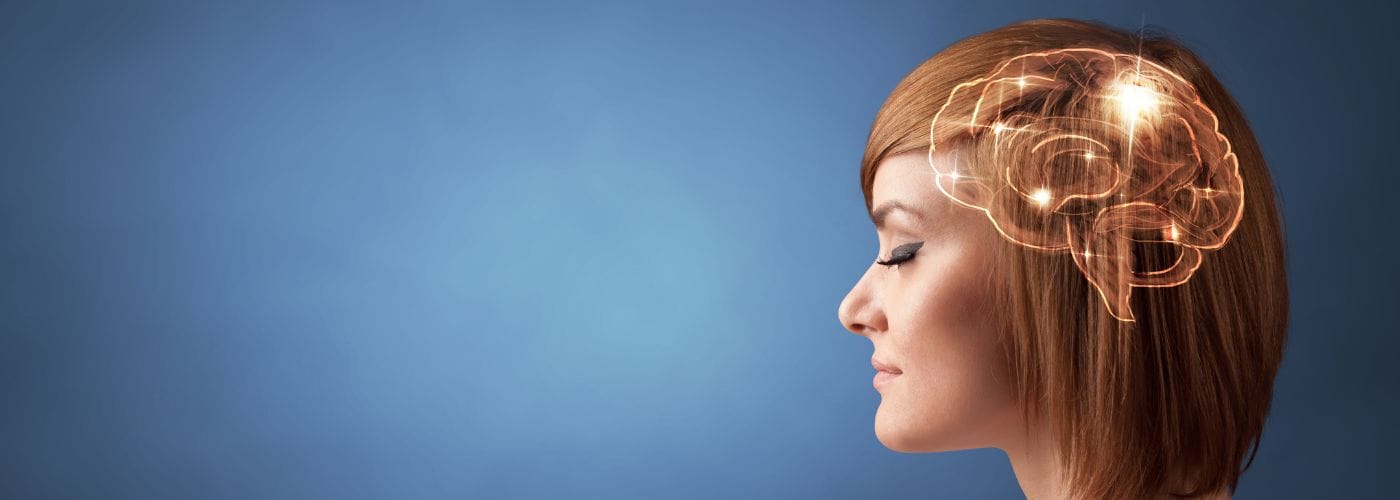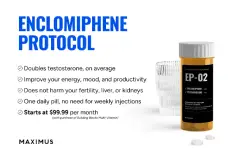BadassBlues
Well-Known Member
I received an email from PS today regarding a new product, Dihexa. It's new to their lineup, but after some research it appears this has been around for quite a while. I have never heard of it until today. It's reportedly a very strong and effective cognitive and mood enhancer. There have been no formal clinical trials and it is not FDA approved. There appears to be some concern regarding its (theoretical) effect on c-MET expression which can affect cancer cells:

 en.m.wikipedia.org
en.m.wikipedia.org
This is theoretical and no evidence that is has any effect has been found. Conversely, no evidence that it doesn't have any effect has been found either.
Regardless, people are taking it with reportedly great results. As anything, dosage is likely a key factor. The recommended dosage varies from different sources, but it appears the best results are obtained with a dose between 5 mg and 20 mg.
So being the brave biohacker I am... I ordered some
I'll report back with results. Anyone have anything to add? Any experiences?
Posted on August 3, 2025 by American Medical Wellness

03
Aug
Advances in peptide therapy continue to offer promising avenues for enhanced cognitive function, improved mood, and better overall health. Among the emerging peptides gaining attention is Dihexa, sometimes referred to simply as the “cognitive enhancer” due to anecdotal reports of its potential to improve learning, memory, and neuroprotection.
But what exactly is Dihexa, how does it work, and how should it be dosed? In this in-depth blog post, we’ll explore the science behind Dihexa peptide, explain its proposed mechanisms, discuss Dihexa dosage guidelines, and present best practices for safe use.
Angiotensin IV is linked to various physiological processes, including learning and memory. By modifying the structure of angiotensin IV, scientists aimed to create a more potent peptide capable of crossing the blood-brain barrier and offering enhanced neuroprotective and neuroregenerative benefits.
Dihexa’s unique chemical structure helps it penetrate deeply into the central nervous system, potentially making it a candidate for addressing cognitive decline. Though some preclinical research indicates Dihexa may help form new functional synaptic connections and improve memory retention, formal large-scale human trials are still needed.
Nevertheless, the peptide’s unique origins and mechanisms have put it on the map for those seeking advanced nootropic agents or supplemental neuroprotective strategies.
While the precise pathways are still under investigation, below are some potential benefits frequently cited by early research and anecdotal experiences:

Below are some commonly discussed guidelines:

Anyone considering Dihexa should weigh its potential benefits against the current gaps in knowledge, the lack of FDA approval, and the variability in product quality.
At American Medical Wellness, our mission is to keep you informed with the latest, research-based information. If you are exploring Dihexa or other peptides, we recommend consulting a qualified healthcare provider for personalized guidance.
By combining Dihexa’s potential benefits with a well-rounded health regimen, you can better support your cognitive goals in a safe and responsible manner.

Hepatocyte growth factor receptor - Wikipedia
This is theoretical and no evidence that is has any effect has been found. Conversely, no evidence that it doesn't have any effect has been found either.
Regardless, people are taking it with reportedly great results. As anything, dosage is likely a key factor. The recommended dosage varies from different sources, but it appears the best results are obtained with a dose between 5 mg and 20 mg.
So being the brave biohacker I am... I ordered some
I'll report back with results. Anyone have anything to add? Any experiences?
Dihexa: A Comprehensive Guide to This Promising Peptide
Posted on August 3, 2025 by American Medical Wellness

03
Aug
Advances in peptide therapy continue to offer promising avenues for enhanced cognitive function, improved mood, and better overall health. Among the emerging peptides gaining attention is Dihexa, sometimes referred to simply as the “cognitive enhancer” due to anecdotal reports of its potential to improve learning, memory, and neuroprotection.
But what exactly is Dihexa, how does it work, and how should it be dosed? In this in-depth blog post, we’ll explore the science behind Dihexa peptide, explain its proposed mechanisms, discuss Dihexa dosage guidelines, and present best practices for safe use.
What Is Dihexa?
Dihexa, also known by its chemical designation N-hexanoic-Tyr-Ile-(6) aminohexanoic amide, is a small peptide originally developed by researchers at Washington State University. This peptide stems from angiotensin IV analogs, a class of compounds studied for their ability to impact brain function.Angiotensin IV is linked to various physiological processes, including learning and memory. By modifying the structure of angiotensin IV, scientists aimed to create a more potent peptide capable of crossing the blood-brain barrier and offering enhanced neuroprotective and neuroregenerative benefits.
Dihexa’s unique chemical structure helps it penetrate deeply into the central nervous system, potentially making it a candidate for addressing cognitive decline. Though some preclinical research indicates Dihexa may help form new functional synaptic connections and improve memory retention, formal large-scale human trials are still needed.
Nevertheless, the peptide’s unique origins and mechanisms have put it on the map for those seeking advanced nootropic agents or supplemental neuroprotective strategies.
Mechanisms of Action and Potential Benefits
One of the most intriguing features of Dihexa is its suspected role in promoting synaptogenesis—the formation of new synaptic connections in the brain. This activity may be driven by increased levels of brain-derived neurotrophic factor (BDNF) or through a more direct modulation of specific receptors that govern cognitive processes.While the precise pathways are still under investigation, below are some potential benefits frequently cited by early research and anecdotal experiences:
- Improved Cognitive Function: Users often report sharper focus and enhanced short-term memory, which may be attributed to Dihexa’s ability to support new neuronal connections.
- Neuroprotection: Preliminary studies suggest Dihexa might help combat neurodegenerative processes by protecting neurons from damage and possibly slowing cognitive decline. This is of particular interest for conditions like Alzheimer’s or Parkinson’s disease.
- Mood and Motivation: Some individuals find that boosting neurotrophic factors correlates with better mood regulation and a heightened sense of motivation or mental clarity.
- Traumatic Brain Injury Support: There is ongoing research into whether Dihexa could aid in the recovery of cognitive function following injuries, though more rigorous human data is needed.

Dihexa Dosage
Because Dihexa is not FDA-approved and formal clinical guidelines are lacking, Dihexa dosage practices are primarily based on preliminary research and user reports. Dosages can vary significantly depending on factors such as individual body chemistry, cognitive goals, and the route of administration (e.g., oral vs. transdermal vs. subcutaneous injection).Below are some commonly discussed guidelines:
- Low to Moderate Doses: Anecdotal sources often mention daily ranges between 5 mg and 10 mg, especially for new users who are testing tolerance.
- Higher Doses: Some individuals, under professional supervision, may explore doses up to 20 mg or more, but this increases the risk of unknown side effects.
- Frequency: Some opt for once-daily dosing, while others split their daily dose into two administrations—morning and early afternoon—to maintain steady levels.
Step-by-Step Guide: Using Dihexa Safely
- Consult with a Professional: Begin by discussing your cognitive or health objectives with a qualified medical professional. Given Dihexa’s experimental nature, obtaining expert guidance is critical to minimize potential risks.
- Source High-Quality Peptides: If you decide to proceed, ensure your Dihexa comes from a reputable supplier with third-party testing. Purity and potency can vary widely among vendors.
- Choose Your Administration Route:
- Oral Supplements: Dihexa may be available in capsule or tablet form, though absorption can be less predictable.
- Transdermal Creams: Some formulations allow topical application, which may enhance localized absorption.
- Injections: Subcutaneous or intramuscular injections might offer a more direct route into systemic circulation but require sterile technique.
- Determine the Right Dosage: Begin at the low end of the suggested range and gradually increase if needed, all under professional advice. Track your response in a journal or app.
- Monitor Effects: Keep a log of mental clarity, memory, mood, or any side effects like headaches or anxiety. This data can help you and your healthcare team adjust dosage for optimal results.
- Cycle and Reassess: Due to limited long-term data on continuous Dihexa use, many individuals cycle on and off or periodically reduce the dose. Periodic reassessments with your healthcare provider can ensure ongoing safety and efficacy.
- Prioritize Overall Brain Health: Peptides like Dihexa can be part of a broader strategy that includes balanced nutrition, regular exercise, quality sleep, and stress management for maximum cognitive benefits.

Frequently Asked Questions
1. Is Dihexa FDA-Approved?
No. Dihexa has not received FDA approval for any medical condition. It remains an experimental compound without formal clinical guidelines for dosage or usage.2. How Does Dihexa Compare to Other Nootropics?
While many nootropics focus on boosting neurotransmitters or cerebral blood flow, Dihexa’s allure lies in its potential to support synaptic growth directly. However, its research base is still smaller than that of more established nootropics.3. Can I Combine Dihexa with Other Cognitive Enhancers?
Some individuals stack Dihexa with compounds like Noopept, Phenylpiracetam, or modafinil to maximize cognitive gains. Because there is little research on Dihexa’s interactions, always consult a professional when combining multiple nootropics.4. What Are the Common Side Effects?
Anecdotal reports vary, but some individuals mention mild headaches, anxiety, or an overstimulated feeling. If you experience adverse effects, discontinue use and consult your healthcare provider.5. How Long Until I See Results?
Timing varies. Some users report subtle improvements within days, while others notice more significant changes after several weeks of consistent use. Regular monitoring can help you identify any cognitive or mood shifts.Potential Risks and Solutions
- Lack of Human Clinical Trials
- Risk: Much of the data on Dihexa comes from animal studies or user anecdotes, leaving uncertainties about long-term safety.
- Solution: Proceed with caution and seek professional oversight. Stay current on emerging research.
- Quality Control
- Risk: Inconsistent purity from unverified sources can lead to contamination or improper dosages.
- Solution: Rely on trusted compounding pharmacies or peptide manufacturers that provide third-party testing.
- Unknown Drug Interactions
- Risk: Combining Dihexa with other medications or supplements may pose unforeseen interactions.
- Solution: Inform your healthcare provider about your full supplement and medication list before starting Dihexa.
- Individual Variability
- Risk: Responses to Dihexa can differ widely, influenced by genetics, lifestyle, and other health factors.
- Solution: Use a low-and-slow approach. Track your experiences to adjust dosage or discontinue if necessary.
Conclusion
Dihexa stands out in the evolving field of peptide-based therapies for its potential to enhance cognitive function, protect neurons, and even promote synaptic regeneration. While early research is promising, it is still an experimental compound with limited human data.Anyone considering Dihexa should weigh its potential benefits against the current gaps in knowledge, the lack of FDA approval, and the variability in product quality.
At American Medical Wellness, our mission is to keep you informed with the latest, research-based information. If you are exploring Dihexa or other peptides, we recommend consulting a qualified healthcare provider for personalized guidance.
By combining Dihexa’s potential benefits with a well-rounded health regimen, you can better support your cognitive goals in a safe and responsible manner.












